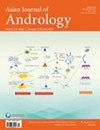中国年轻人自我报告的男性性功能量表的有效性:与临床医生辅助评估的比较研究
IF 3
2区 医学
Q2 ANDROLOGY
引用次数: 0
摘要
常用于衡量性功能的心理测量量表有时会受到反应偏差的影响。在 2020 年 6 月至 2021 年 4 月的研究中,我们考察了自我报告性功能量表的准确性。我们邀请了中山大学附属第三医院(中国广州)不孕不育与性医学科的男性性功能障碍患者参与研究,他们填写了一份自我报告版的特定问卷。此外,他们还进行了临床医生辅助版的问卷调查,其中包括早泄诊断工具(PEDT)、6项国际勃起功能指数(IIEF-6)、勃起硬度量表(EHS)和手淫勃起指数(MEI)等工具。我们以临床医生辅助版本为参考,对患者进行了分类,并采用了多种统计方法,如卡方检验、类内相关系数(ICC)、逻辑回归和布兰德-阿尔特曼图等,以衡量可靠性。在我们对 322 名参与者进行的研究中,我们发现虽然根据我们的分类,错误率没有明显差异,但某些量表在高估和低估方面存在显著差异,PEDT 除外。自我报告版和临床医生辅助版的阳性诊断率具有一致性。两个版本的量表之间具有较高的 ICC 值,这表明它们具有显著的可靠性。我们的研究结果表明,EHS、IIEF-6、MEI 和 PEDT 等工具的自我报告版本是可信的,具有临床可靠性。然而,采用双重诊断方法可能会更谨慎,以避免潜在的误诊。本文章由计算机程序翻译,如有差异,请以英文原文为准。
Validity of self-reported male sexual function scales in a young Chinese population: a comparative study with clinician-assisted evaluation
Psychometric scales, commonly used to gauge sexual function, can sometimes be influenced by response biases. In our research from June 2020 to April 2021, we examined the accuracy of self-reported sexual function scales. We invited patients from the Department of Infertility and Sexual Medicine at the Third Affiliated Hospital of Sun Yat-sen University (Guangzhou, China), who have male sexual dysfunction, to participate by filling out a self-reported version of a specific questionnaire. In addition, they went through a clinician-assisted version of this questionnaire, encompassing tools such as the Premature Ejaculation Diagnostic Tool (PEDT), the 6-item International Index of Erectile Function (IIEF-6), the Erection Hardness Scale (EHS), and the Masturbation Erection Index (MEI). Using the clinician-assisted version as a reference, we categorized patients and applied various statistical methods, such as the Chi-square test, intraclass correlation coefficient (ICC), logistic regression, and the Bland–Altman plot, to gauge reliability. In our study with 322 participants, we found that while there were no notable discrepancies in error rates based on our categorization, certain scales showed significant differences in terms of overestimation and underestimation, with the exception of the PEDT. The positive diagnosis rate consistency between the self-reported and clinician-assisted versions was observed. High ICC values between the two versions across the scales were indicative of remarkable reliability. Our findings show that the self-reported versions of tools such as EHS, IIEF-6, MEI, and PEDT are credible and hold clinical reliability. However, employing a dual-diagnosis approach might be more prudent to circumvent potential misdiagnoses.
求助全文
通过发布文献求助,成功后即可免费获取论文全文。
去求助
来源期刊

Asian Journal of Andrology
医学-泌尿学与肾脏学
CiteScore
4.90
自引率
3.40%
发文量
2252
审稿时长
2.2 months
期刊介绍:
Fields of particular interest to the journal include, but are not limited to:
-Sperm biology: cellular and molecular mechanisms-
Male reproductive system: structure and function-
Hormonal regulation of male reproduction-
Male infertility: etiology, pathogenesis, diagnosis, treatment and prevention-
Semen analysis & sperm functional assays-
Sperm selection & quality and ART outcomes-
Male sexual dysfunction-
Male puberty development-
Male ageing-
Prostate diseases-
Operational andrology-
HIV & male reproductive tract infection-
Male contraception-
Environmental, lifestyle, genetic factors and male health-
Male reproductive toxicology-
Male sexual and reproductive health.
 求助内容:
求助内容: 应助结果提醒方式:
应助结果提醒方式:


